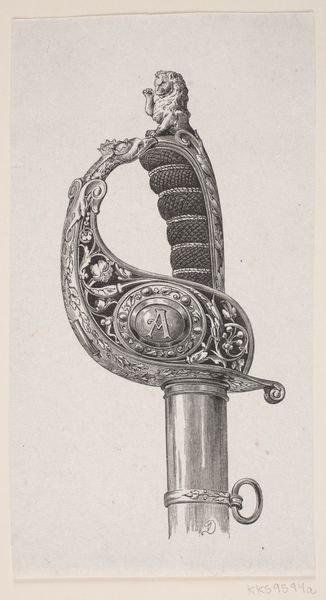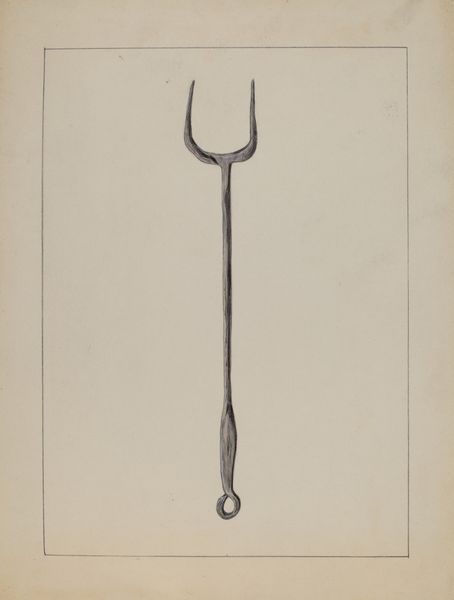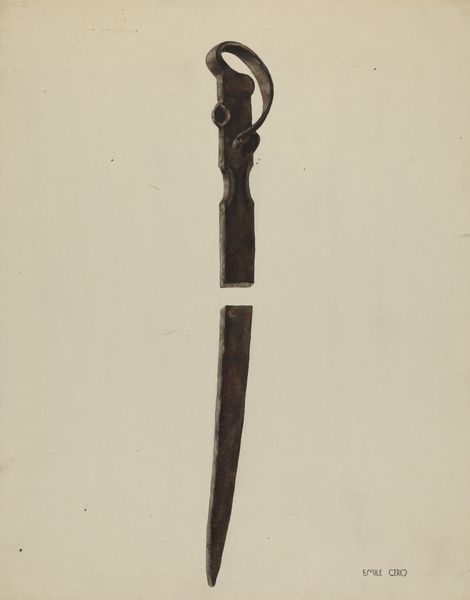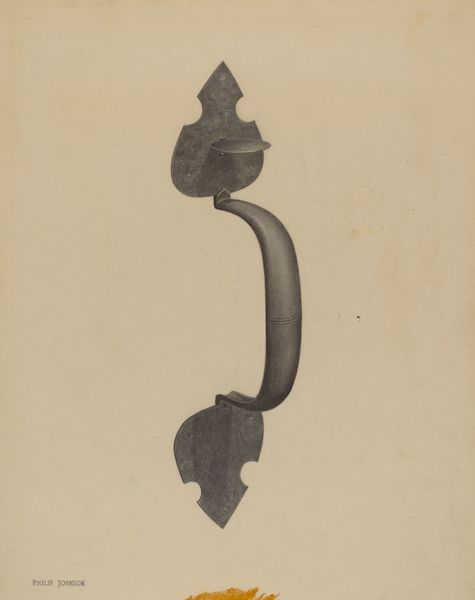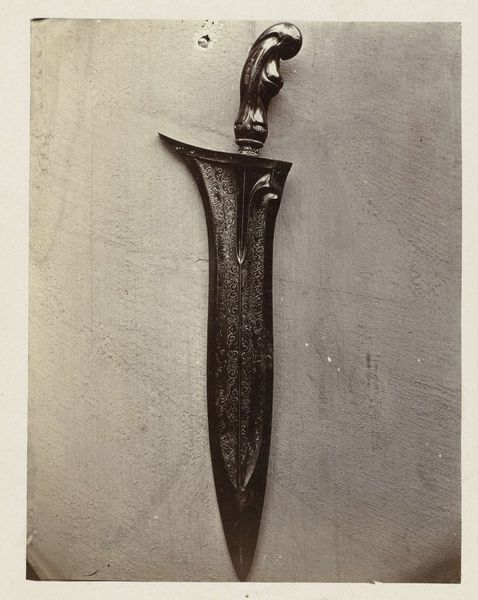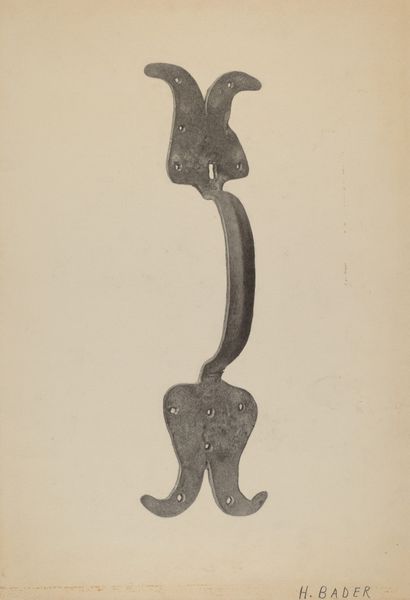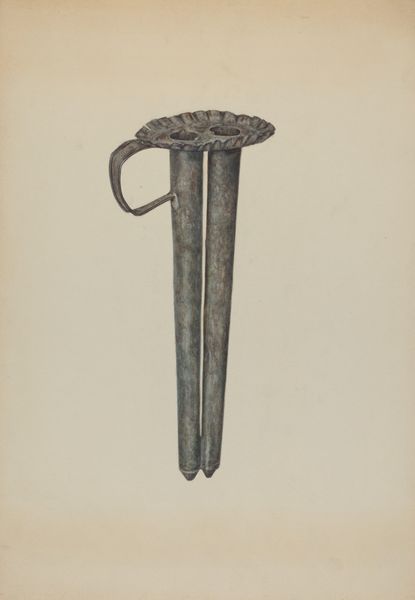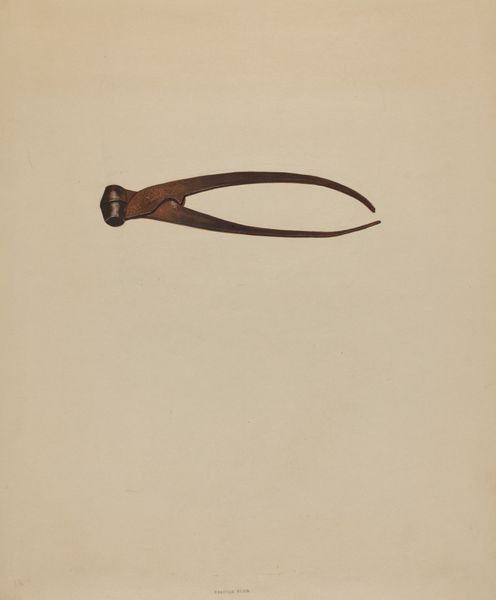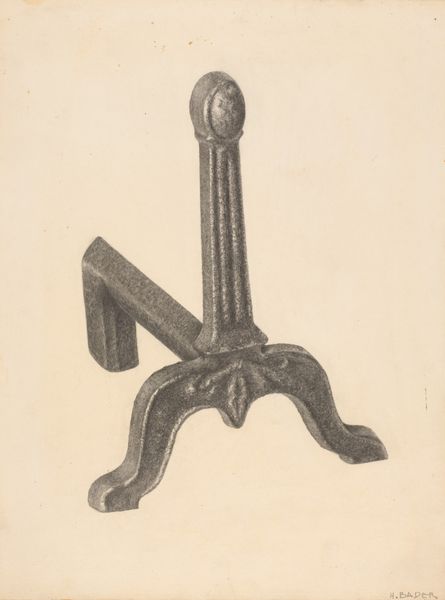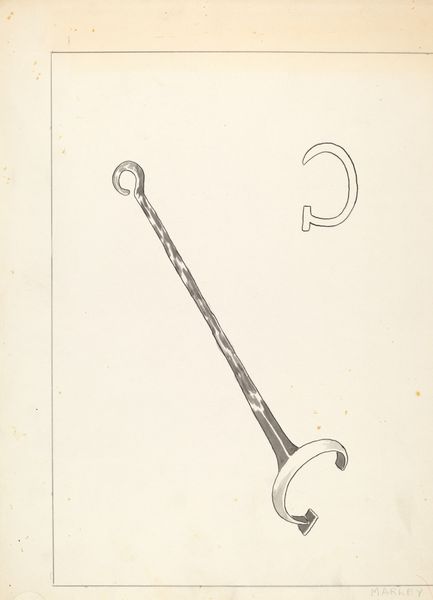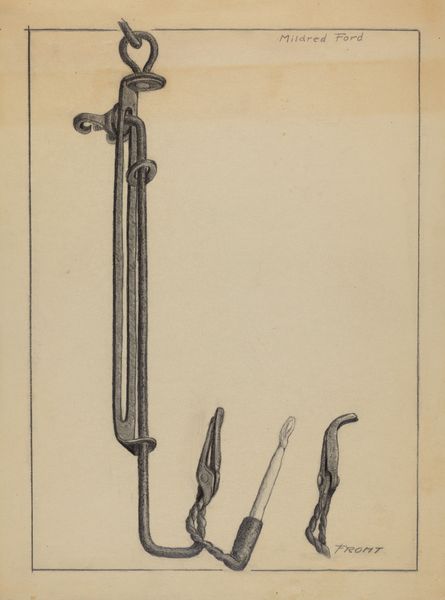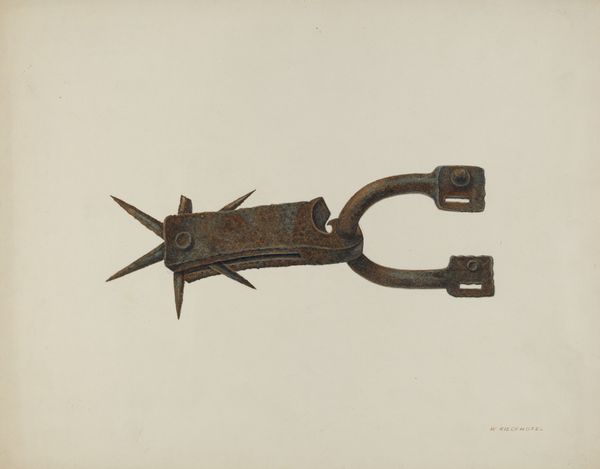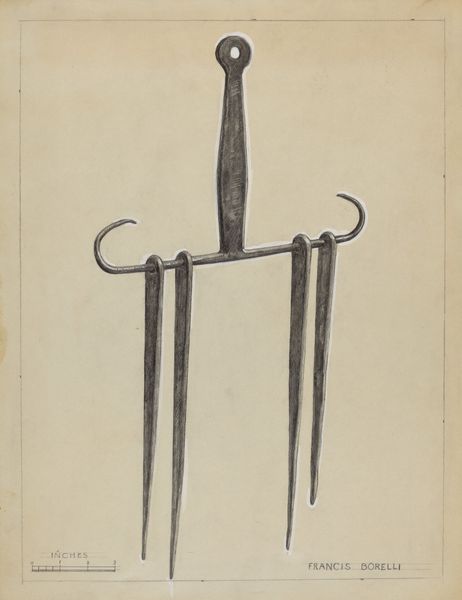
drawing, print, metal, engraving
#
drawing
# print
#
metal
#
geometric
#
line
#
engraving
Dimensions: height 293 mm, width 176 mm
Copyright: Rijks Museum: Open Domain
Editor: This is the "Olifantenhaak (ankus)", an elephant goad from somewhere between 1866 and 1879, created by Edouard Lièvre. It is an engraving of metal artwork. It strikes me as incredibly ornate for a tool used on animals. What story does this object tell you? Curator: It is indeed ornate. Think about the cultural context of its creation. These decorative goads weren't simply about controlling elephants. They were potent symbols of power, used in elaborate ceremonies and displays, often associating the owner with dominance, not just over animals, but potentially reflecting colonial hierarchies as well. What does the artist’s choice of engraving suggest to you about its function? Editor: Hmmm. The intricacy of the engraving suggests a focus on artistry and detail rather than pure functionality, highlighting status. Was it, then, more symbolic than practical? Curator: Precisely! And the image's circulation, reproduced through prints and drawings, extends that power dynamic beyond the object's immediate use. It showcases an object imbued with authority to a wider audience. What effect might such depictions have on public perceptions of colonialism and its actors? Editor: I guess it served to glamorize the tools of dominance, normalizing them for public consumption, reinforcing certain power dynamics within the 19th century social hierarchy. It’s a beautiful, yet unsettling, depiction. I hadn't considered the public relations aspect of these images before. Curator: Indeed. Visual representations play a crucial role in shaping cultural narratives. They are never neutral. This has made me see new connections about how imagery itself is used as a cultural weapon. Editor: Me too, It’s fascinating how one object and its reproduction can be loaded with so much historical weight.
Comments
No comments
Be the first to comment and join the conversation on the ultimate creative platform.
